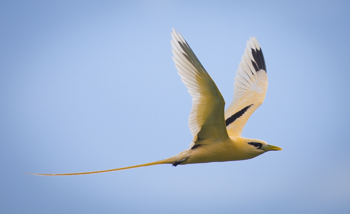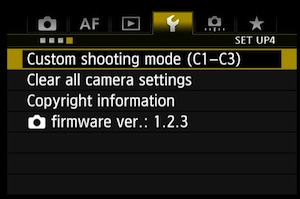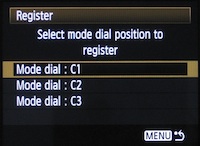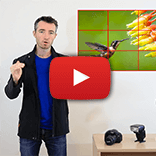Panning Mode:
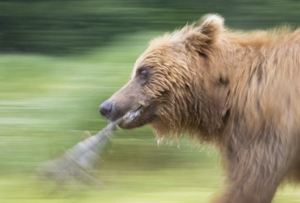 |
Slow shutter speed, tracking focus, etc
to capture movement in a subject. |
Using a deliberately slow shutter speed while tracking a moving subject can give beautiful results. Ideally the animal/bird appears sharp (because tracking it, you’ve kept the subject in the same part of the photo for the duration of the photo), but the background behind has streaked-out from movement blur (because you panned the camera during the photo). It’s a great way to capture a feeling of movement in an image but the problem is that the settings required are completely opposite to the camera settings you’d normally be using and by the time you’ve dialled them in, the moving subject has long since gone! Not anymore, though, if you set this ‘panning mode’ up as a custom mode like I do!
The key thing here is you need a slow shutter speed to capture that blurry background movement. It’s a balance - too fast and the subject won’t have moved far enough to give you any streaky background; too slow and it’ll be impossible to accurately track the subject the whole time, resulting in a blurry subject. It depends how fast your subject’s moving, and how long your lens is. You’ll get a feel for it, but a good starting point for birds and animals with a telephoto lens could be about 1/30th sec.
So switch to Tv mode (S mode for non-Canons) and dial your shutter speed down to 1/30th sec. Again, set your ISO to ‘Auto’ so that it’ll do whatever it has to do to give you that shutter speed irrespective of lighting conditions (it’ll usually pick the lowest, ISO100). Again, set your focus-mode to ‘AI Servo’ (aka ‘AF-C’) so it’ll track focus on the moving animal, and again, perhaps enable more than just one center AF point (so you don’t have to be so pedantic about making sure you don’t accidentally slip the one focus point off the animal as you track it). Again, set your camera’s ‘drive mode’ to continuous drive so you can just hold the button down and rattle off a whole series of photos, concentrating on trying to pan smoothly. Hopefully you will have, on at least one of them.
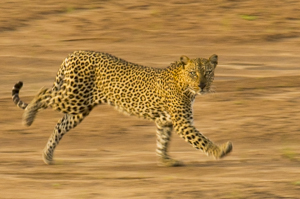 |
| Panning shots show movement blur |
Panning Mode Tip: Because you’re asking for such a slow photo, you may well find - especially during the middle of the day and when using a very slow shutter speed like 1/10th sec or longer - that the camera can’t help but over-expose the photo. You’ll likely just notice your photos are coming out too bright. If you’re observant, though, you’d have also noticed (when looking through the viewfinder before you took the shot) that the f/# it was automatically trying to use (likely the largest possible) was flashing, or was replaced with ‘hi’ or ‘low’. This is warning you that the camera can’t give you what you want. If this happens, you’ll have to scroll up your shutter speed up a bit faster until it can cope. Don’t try to solve the issue by dialling down your exposure compensation to make the photo darker – that won’t help. Think about it: at the slow shutter speed you’re asking for, the camera can’t help but capture too much light, so your photo is going to be brighter than desired. It can’t give you normal brightness, and it certainly can’t give you a darker photo, even if you ask for it by dialling down your EC. Dialling up your EC (asking for a brighter photo) may stop the camera flashing/complaining (because that basically translates to, “Well, yes, if you want a bright photo, I can do that,” but it hasn’t solved the problem – you’re photo’s still over exposed). The only way to fix it is to accept that you’re going to have to use a higher shutter speed and get less streaky-movement in the background. On the up side, though, it’ll be easier to keep the subject sharp because you don’t have to track it for as long!


